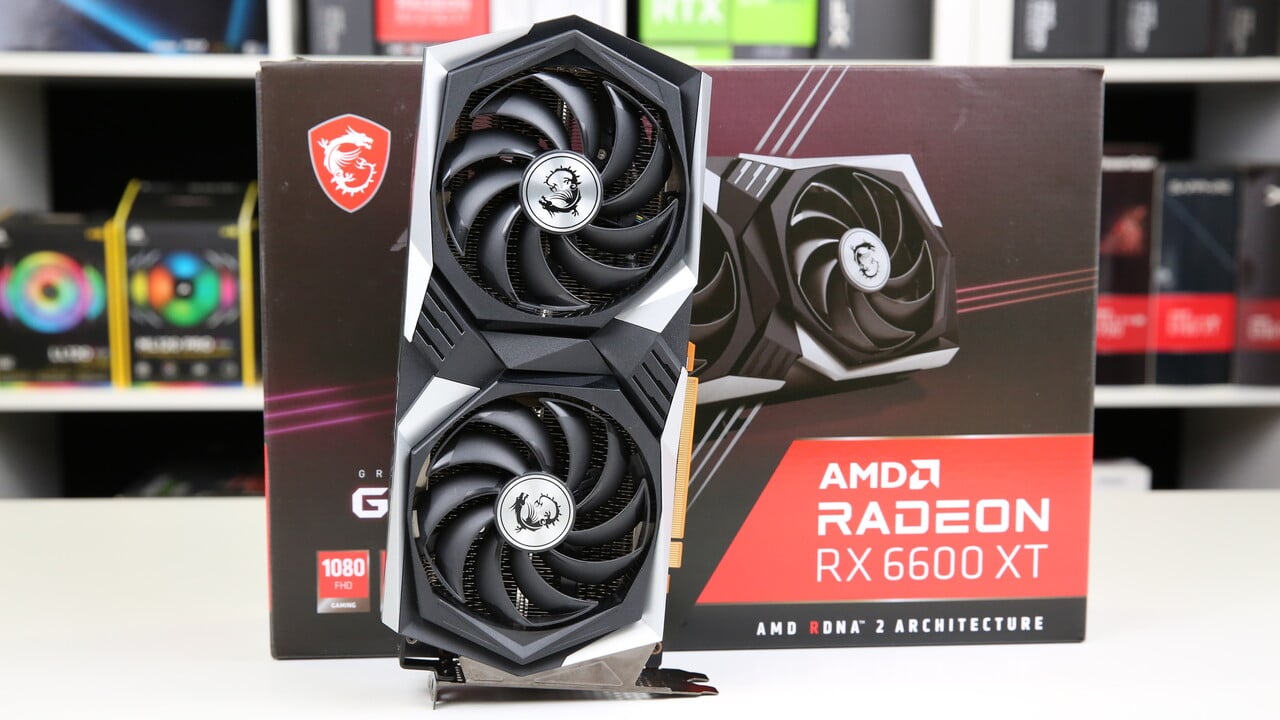AMD Radeon RX 6600 XT “titleonly”
: Test |CUP | Specs |Config
The Radeon RX 6600 XT is the new smallest graphics card with RDNA 2. In the test it has to prove itself against GeForce RTX 3060 and RX 5700 XT. Nobody is fooling you in the performance per watt discipline, but there are two special features to consider when it comes to performance: the memory and the PCI Express interface.
AMD’s Radeon RX 6600 XT at a glance
As a rule, a new generation of graphics cards comes onto the market first with the top models, with the smaller versions following at a distance. It’s no different with AMD’s RDNA-2 architecture.
The RDNA-2 portfolio started with the high-end models Radeon RX 6800, Radeon RX 6800 XT (test) and Radeon RX 6900 XT (test) within a few days, followed by the middle class in the form of the Radeon RX after several months 6700 XT (test) and now with the Radeon RX 6600 XT an even smaller “entry-level solution”. Your application area clearly communicated by AMD at an RRP of 379.99 euros: AAA games in Full HD. Both the now two-year-old Radeon RX 5700 XT (419 euros RRP) and the GeForce RTX 3060 (329 euros) should be beaten.
Die MSI Radeon RX 6600 XT Gaming X “titleonly”
image 1 from 2
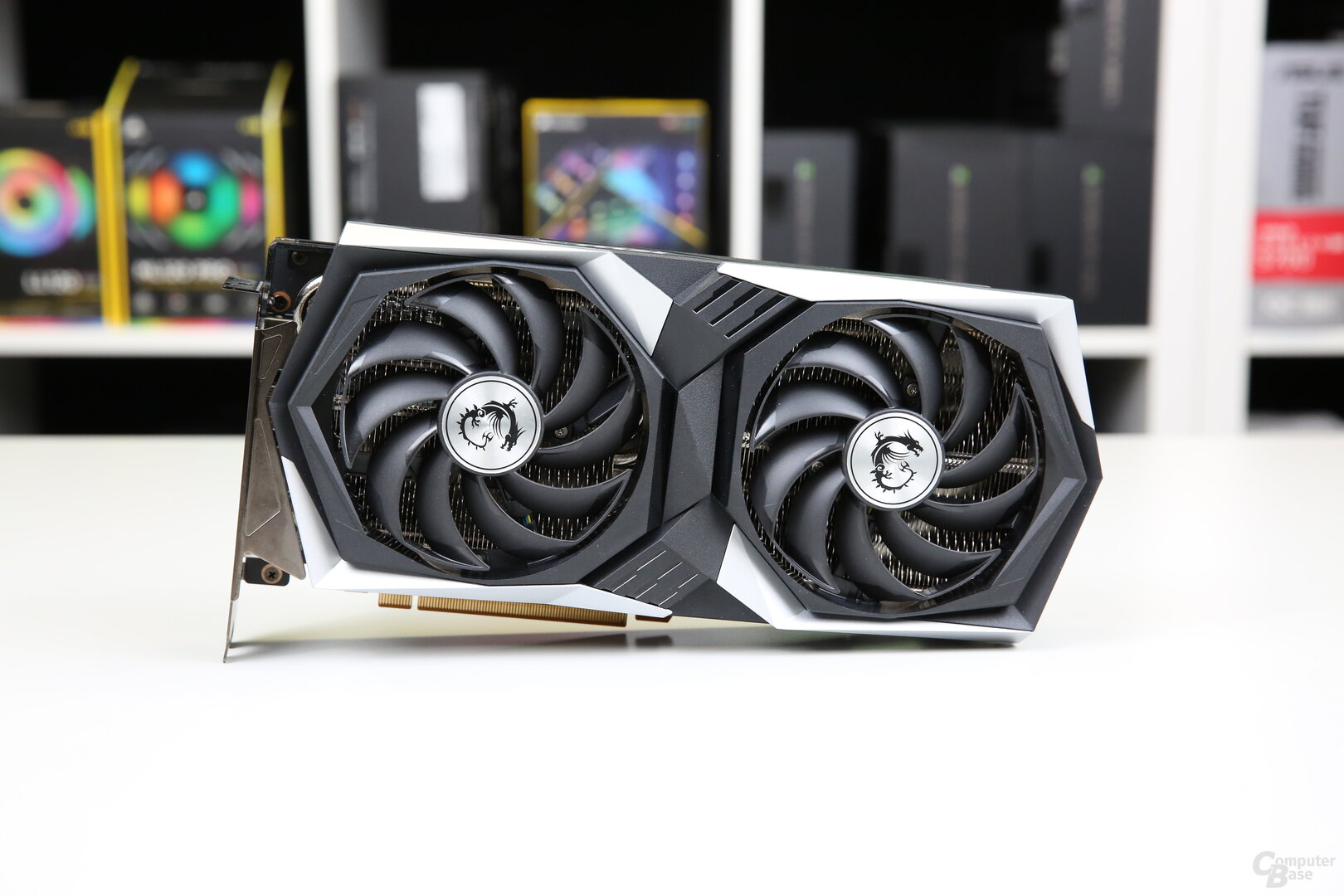
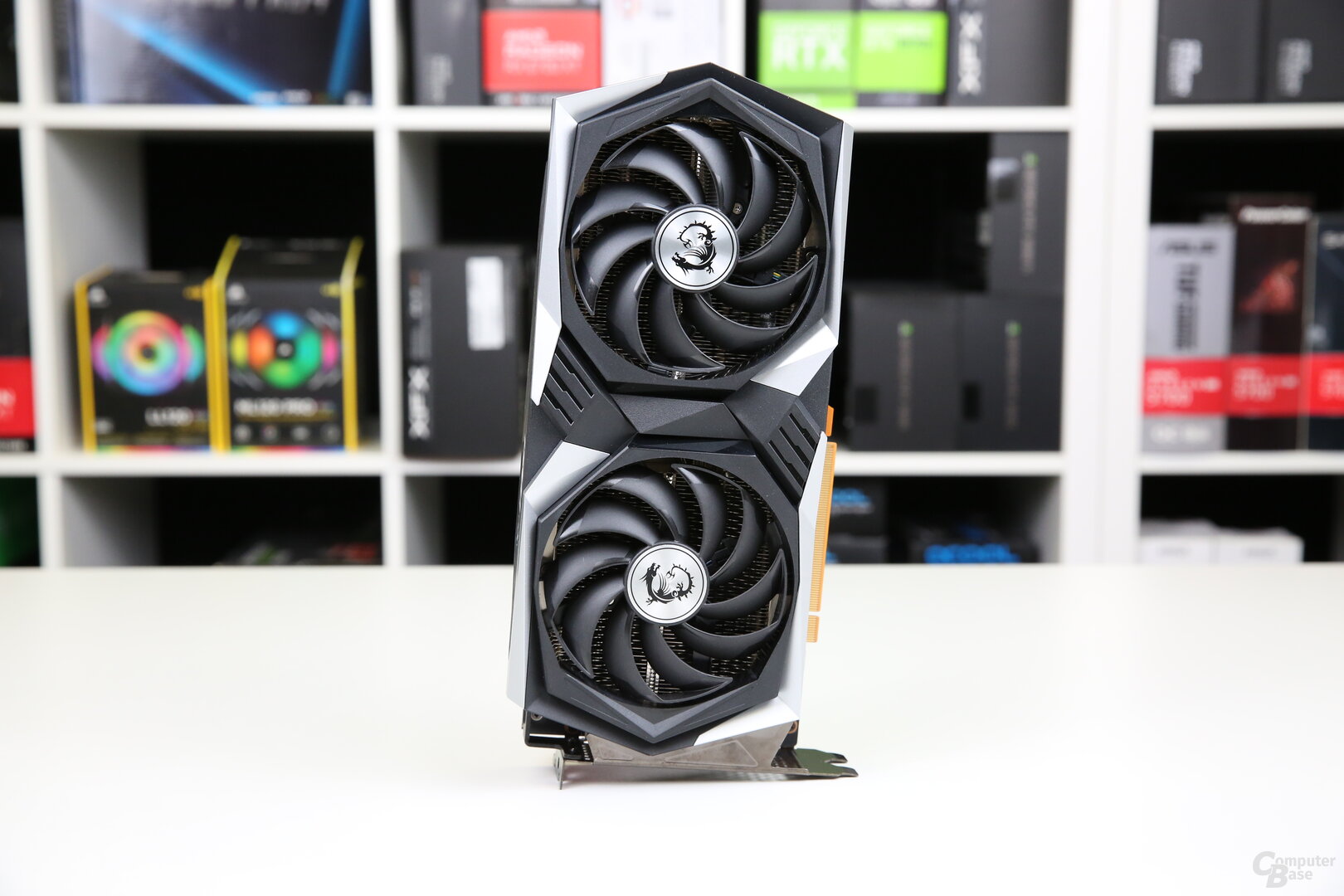
AMD realizes the Radeon RX 6600 XT with the Navi-23-GPU, which up to now has only been installed on the mobile Radeon RX 6600M. ComputerBase uses an MSI Radeon RX 6600 XT Gaming X to determine whether the smallest RDNA-2 GPU achieves the goals set by the manufacturer – because there will be no reference design this time.
But that’s just the beginning, because with PowerColor Radeon RX 6600 XT Red Devil, Sapphire Radeon RX 6600 XT Pulse and XFX Radeon RX 6600 XT Merc 308, three more custom designs have already appeared in the editorial office. A comparison will follow shortly.
Addition from August 11: The custom design comparison is now also available with the article RX 6600 XT: Custom designs in the test: MSI, PowerColor, Sapphire and XFX in comparison.
With RDNA 2, the Radeon RX 6600 XT uses the same architecture and features as the larger RDNA-2 models, but the GPU used has a completely different footprint. The deployed Navi-23 GPU with 11.1 billion transistors consists of significantly fewer circuits than the larger offshoots (Navi 22: 17.2 billion, Navi 21: 26.8 billion), and the chip itself with 237 is accordingly mm² also much smaller. In contrast, the manufacturing process is again based on TSMC’s N7P process.
On the Radeon RX 6600 XT, all 32 compute units of the Navi-23-GPU are active, which corresponds to 2,048 FP32-ALUs. That is 8 CUs less than the Radeon RX 6700 XT, but 4 more than the mobile Radeon RX 6600M. With a game clock of 2,359 MHz, even the smallest RDNA-2 offshoot offers a high GPU frequency, whereby the Radeon RX 6700 XT goes one better with 2,424 MHz. The maximum boost of 2589 MHz, on the other hand, is even slightly higher than in the larger model.
The memory interface on the Radeon RX 6600 XT has a width of 128 bits (8 × 16-bit controller) compared to 192 bits or 256 bits of the larger models, the memory expansion is 8 GB of the GDDR6 type. Technically, 16 GB of memory would also be possible.
A small infinity cache with a lot (less) bandwidth
In connection with the 16 Gbps memory, the memory interface of the new graphics card offers a very small memory bandwidth of only 256 GB / s, which is also compensated (“buffered”) in this case by the Infinity Cache.
On the Radeon RX 6600 XT, however, it has also been massively shortened compared to the larger models, instead of 128 MB or 96 MB it is only 32 MB in size. According to AMD, this should still be sufficient for Full HD. In this resolution, the cache hit rate should be a little over 50 percent and therefore comparable to 128 MB in Ultra HD. In higher resolutions, the hit rate of the cache drops significantly compared to the larger models, so that the Radeon RX 6600 XT will probably break in WQHD more than the Radeon RX 6700 XT – the test will clarify that later.
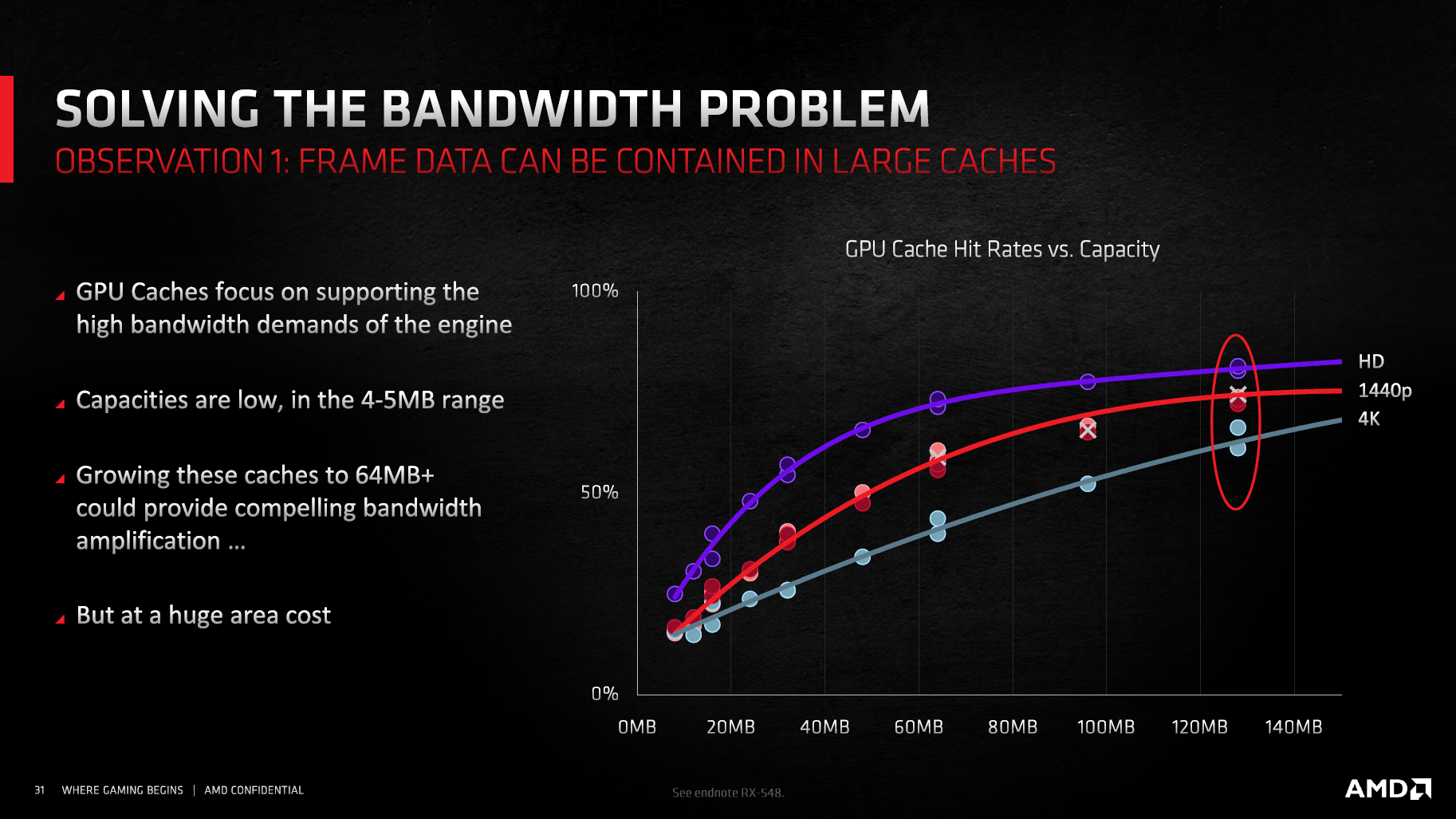
Since the Infinity Cache on RDNA 2 is connected to the memory controller and there are eight on Navi 23, the 32 MB is made up of a total of eight 4 MB “chunks”. So not only are there fewer cache modules than on the larger GPUs, they are also only half the size.
The Infinity Fabric, to which the Infinity Cache is connected, among other things, works on Navi 23 with a maximum clock rate of 1.8 GHz a little slower than the counterpart on Navi 21 and Navi 22, where a maximum of 1.94 GHz is available.
Eight controllers with 64 bytes / clock each (1 controller per GDDR6 controller) are on board for the fast buffer storage, which with a total of 512 bytes / clk is half as much as with Navi 21 (Navi 21: 1,024 bytes / clc, Navi 22 : 768 bytes / clc). The bandwidth through the Infinity Cache is still a high 922 GB / s, which corresponds to about 19.5 Gbps memory on a 384-bit interface and thus the GeForce RTX 3090 – but only if the required data are in the 32 MB Infinity Cache. If this is not the case, these must be called up via the significantly slower GDDR6 memory interface.
The PCIe bandwidth is also significantly reduced
Apart from the cuts mentioned so far, AMD has also shut down the PCIe connection to the CPU on the small GPU; the computing power would not be large enough for the 16 PCIe 4.0 lanes active on the larger graphics cards. The PCIe 4.0 standard remains, AMD has halved the number of lanes. Even if eight PCIe 4.0 lanes may be sufficient for maximum performance, the full bus width can be an advantage if there is a lack of VRAM. In addition, there may be limitations if the substructure used only supports PCIe 3.0 (CPU / mainboard), because then the bandwidth, which has already been halved, is halved again. ComputerBase also clarifies in the test whether that costs performance.
It is 160 watts with AMD specifications
AMD calls the Radeon RX 6600 XT a “total board power” of 160 watts, the TGP is 130 watts. Manufacturers can increase the power consumption of OC versions as usual, although it is to be expected that the custom designs will only add a little extra. At 160 watts, a single 8-pin power plug is provided for operation.
Die MSI Radeon RX 6600 XT Gaming X im Detail
With the Radeon RX 6600 XT Gaming X, MSI’s premium model has arrived for the test. The graphics card is based strongly on the in-house Radeon RX 6700 XT Gaming X, differences can only be found in the details. Both the cooler and the equipment are not identical, but they are very similar.
The MSI Radeon RX 6600 XT Gaming X looks quite powerful for an entry-level graphics card, which is primarily due to the 2.5 slot wide cooler, which is identical in structure to the counterpart on the larger model and only differs in the number of heat pipes and differs slightly in width. The latter is slightly narrower with the mentioned 2.5 slots compared to the 2.7 slots, and there are only four instead of five heat pipes.
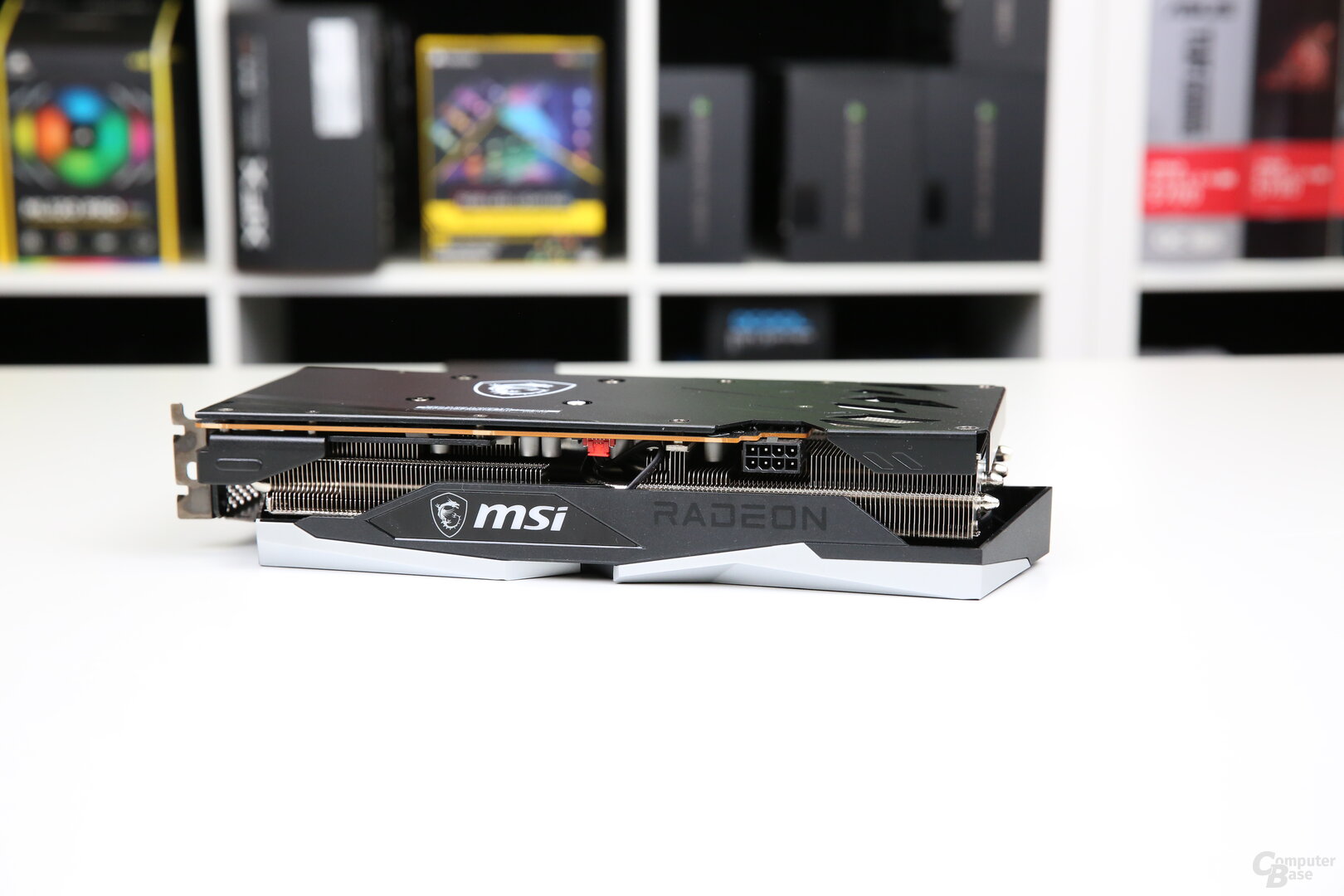
Power connection of the MSI Radeon RX 6600 XT Gaming X
image 1 of 5
The cooler structure, on the other hand, again consists of two different aluminum coolers, which are connected to one another by means of the heat pipes and are simply a bit flatter with the new 3D accelerator. In contrast, the two axial fans with a diameter of 95 mm are completely identical. These switch off on the Windows desktop for silent operation.
From the outset there is a little OC and a little more TGP power
MSI calls the Radeon RX 6600 XT Gaming X a game clock of 2,428 MHz, the maximum boost is 2,607 MHz. That is 69 MHz and 18 MHz more than AMD’s reference specifications. The TGP is 135 watts, which is 5 additional watts. Accordingly, an 8-pin power connector is also sufficient on the MSI hardware, especially since the TGP power can only be increased by a further 4 percent. There is no second BIOS with different clock rates and power limits.
With the Gaming X cooler known from the current generation, there is also a fairly simple RGB lighting, which is not a problem with an entry-level graphics card. The same applies to a simple look and feel, because there is nothing more than plastic, especially since it does not look high-quality.
On the next page: clock rates, benchmarks (FHD & WQHD) and ray tracing





